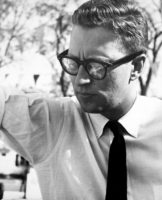Curated by Jock Reynolds. At MASS MoCA, North Adams, Mass., through 2033. www.massmoca.org/lewitt
Retrospectives, by their very name, entail a lengthy look back at an artist’s career. But Sol LeWitt: A Wall Drawing Retrospective, which was conceived by the Yale University Art Gallery and opened on November 16 at the Massachusetts Museum of Contemporary Art (MASS MoCA), in North Adams, is looking ahead — 25 years ahead. This semipermanent exhibition will be on view at least that long. “Given the logistical effort that went into putting this show together,” MASS MoCA director Joseph Thompson points out, “we wanted it up for a long time so that generations will benefit.”
The late artist, whose 1,254 wall drawings were typically executed within given conditions, was closely involved in designing the installation of 105 of them — some, such as his last scribble drawings, never seen before — on freestanding partitions over three floors of a 27,000-square-foot building that he selected at the center of MASS MoCA’s sprawling, 13-acre campus.
LeWitt left all but one of the building’s brick walls exposed, layers of paint revealing the historical use of the factory structure. (A complicated drawing, which connects all architectural points by straight blue snap lines, was executed on a nearly 90-foot-long ground-floor wall punctuated by beams, doors, windows, exit signs, grilles, and fire alarms.) The new, 2-foot-thick partitions, which conceal columns and mechanical infrastructure, provide uninterrupted sight lines for the lively sequence of drawings.
“The challenge was to avoid creating a rabbit warren of mazelike spaces,” recalls Simeon Bruner of Bruner/Cott & Associates of Cambridge, Massachusetts, the architect of this restoration as well as the original, award-winning project that converted the abandoned mill complex into a fledging art institution — the largest contemporary art museum in the United States — in 1999. Prior to his death in 2007, LeWitt, working with Bruner, wanted to produce a display that made sense both to the casual visitor and the serious student.
The drawings, which span 40 years and cover nearly an acre of wall surface, are arranged roughly chronologically, with earlier work, done mostly in hard, black pencil, on the lower level, and later, colorful works executed in ink washes, crayon, markers, and acrylic paint, above. The collection includes deceptively simple, geometrical compositions such as the 1980s Wall Drawing 340, and curvy abstractions such as the Loopy Doopy series and the black-and-white Wall Drawing 999, which was designed for Lever House in New York City.
“Sol had an uncanny sense of how to site things architecturally,” says curator Jock Reynolds. “I love the processional aspect of walking, both kinesthetically and visually.” As the visitor moves through the three-dimensional space, guided by a thoughtfully placed succession of large, two-dimensional panels, his or her experience of the interaction between art and architecture is heightened.
Reynolds, who is director of the Yale University Art Gallery, suggested MASS MoCA for this landmark exhibition because of its underexploited real estate. The nearby Williams College Museum of Art, in Williamstown, Massachusetts, will annually create a series of companion teaching exhibitions. “I hope this collaboration serves as a model for other institutions,” says Reynolds.
The undertaking was also a labor of love for many involved. LeWitt’s longtime draftsmen, including Anthony Sansotta, Jo Watanabe, Chris Cobb, and John Hogan, oversaw the application of these drawings by some 20 studio professionals, 12 apprentices, and 30 undergraduate art students over a six-month period beginning in April 2008 — a fitting tribute to an artist who stressed the idea behind his work over its execution. (Time-lapse video on the museum’s Web site shows work in progress, as well as detailed histories and explanations for each of the drawings).
Bruner’s late wife, Leslie Gould, donated the architecture fees. “An artist herself, she understood that Sol was one of the important conceptual artists of the 20th century,” Bruner says. “She was pleased to help build a place to remember his contribution.”











Post a comment to this article
Report Abusive Comment